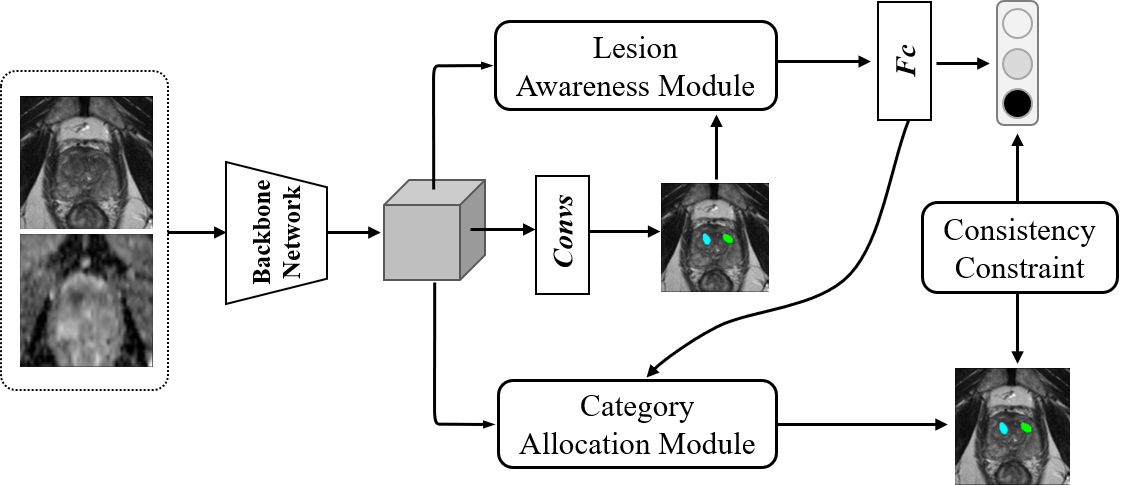
Opportunity
Prostate cancer is the most commonly diagnosed cancer and second leading cause of death from cancer among men. Early detection, diagnosis and treatment can improve patients’ survival rate. In current clinical practice, multi-parametric magnetic resonance imaging (mp-MRI) is one of the most widely used methods of prostate cancer detection and risk assessment. However, manually interpreting mp-MRI sequences requires substantial expertise and labor on the part of radiologists and still offers low levels of sensitivity and specificity. The opportunity thus exists to develop an automated method of prostate cancer detection and diagnosis from mp-MRI scans that both reduces the workload of clinicians and offers more accurate and reliable diagnostic results.
Technology
Researchers have developed an innovative task interaction network (TI-Net) that can simultaneously segment areas of prostate cancer in mp-MRI images (segmentation) and assess the aggressiveness of prostate cancer lesions (classification). This offers radiologists an efficient automated method of identifying the locations of cancer lesions and determining disease severity and thus treatment options and patient prognosis. As segmentation and classification are completed at the same time within a single network, TI-Net has a much lower run-time and computational overhead than existing technologies, which approach these two tasks separately. This also makes TI-Net easier to deploy in computer-assisted design systems, further speeding up computation.
Advantages
- Faster diagnosis and lower computational overhead, as the locations and aggressiveness of prostate cancer lesions are assessed simultaneously within a single network.
- More accurate detection and diagnosis of prostate cancer. Existing technologies consider these two tasks individually, ignoring their complementary information, whereas the new technology conducts deep task interaction to enhance the prediction consistency of the two tasks.
- Easier to deploy in CAD systems due to lower hardware requirements.
Applications
- Hospitals and other clinical settings – helping radiologists to diagnose prostate cancer more quickly and efficiently and providing a diagnostic reference for radiologists when patients’ disease is complicated.
- Medical technology companies, especially those focusing on prostate cancer diagnosis and detection, e.g. Tencent HealthCare, Siemens Healthineers, Mindray, JOHNSON & JOHNSON, and Philips.





